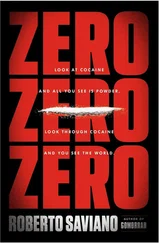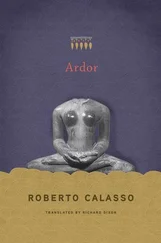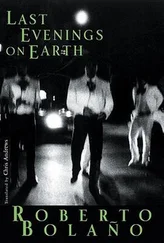It was Kafka’s suspicion, and this too arose from his observations of the family card game, that any practical initiatives on his part to camouflage himself in normalcy (and these could be as diverse as an office job or halfhearted attempts to devote himself to gardening or carpentry) were simply palliatives or clumsy ways of masking behavior that remained as unmistakable, in its hopeless inconsistency, “as the behavior of a man who chases the wretched beggar from his door and then when he’s alone plays the benefactor by passing alms from his right hand to his left.” This behavior corresponds to the sensation of going through life pressing his head “against the wall of a windowless, doorless cell.” The rest—“my family, the office, my friends, the street”—were “all fantasies, some closer, some further off.” Of them, “the closest” was “the woman.” And thus the endless misunderstandings, with whatever woman. And thus the endless attraction, since that closest of fantasies could condense within it all the others and act as their emissary.
“Metaphors are one of the many things that make me despair of writing,” noted Kafka in December 1921, commenting on the last sentence of one of his letters to Klopstock, which says only: “I warm myself by it this sad winter.” A high-power lens comes upon an apparently innocuous sentence, recognizes in it the upsurge of metaphor, and despairs. Why? Kafka, a dogged naturalist of the metaphor, succeeded in bringing nearly everything, and most of all writing, back to that mysterious moment when the image breaks free from the letter — the very moment when what used to be considered real becomes precarious. But not in order to affirm the sovereignty of writing, which is already in itself a metaphor. Indeed, what gets revealed instead is its insuperable dependence on something else . Kafka continued: “Writing’s lack of autonomy, its dependence on the maid who lights the stove, on the cat warming itself there, even on the poor old man who warms himself. Those are all autonomous activities ruled by their own laws, writing alone is helpless, doesn’t dwell in itself, is diversion and despair.” Let’s isolate a few words: only writing “doesn’t dwell in itself”—writing, then, is first among all strangers. To recount the adventures of this stranger is therefore to give an account of writing itself, “diversion and despair.”
The outsider, the stranger, the foreigner — he wasn’t merely the constant protagonist of Kafka’s writing. He must have also been a secret companion, who appeared and reappeared, who accompanied him without being asked to. A few days after commenting on the last sentence of his letter to Klopstock, Kafka wrote: “I woke with a start from a deep sleep. In the middle of the candle-lit room, a stranger was sitting at a tiny table. He was sitting in shadow, broad and heavy, his unbuttoned winter jacket making him seem even broader.”
Foreignness is the background noise in Kafka. Everything presupposes it, everything leads to it. Kafka knew that feeling in its various aspects: from its most obvious, and even banal, psychological manifestations (the sense of being excluded by a group, by a certain type of people, by a community) to its extreme metaphysical figurations (the Gnostic as Stranger in the world and to the world). At the origin of such feelings lay Kafka’s hyper-acute sense of the singularity — even the untranslatability — of his own psychic experience. He didn’t take pleasure in this singularity but rather fought it, going so far as to seek out the humiliation of sojourns in naturist colonies such as Jungborn or Hellerau, where the prime attraction was offered by the illusion of blending in with a group. (He soon realized that he stuck out even more among nudists, even if only as “the man in the bathing suit.”)
All of Kafka’s work is an exercise (in the way that Chopin’s Études are exercises) on the many keys of foreignness. Karl Rossmann is the foreigner in the most radical and literal sense: the adolescent expelled from his country and thrown onto a new continent. K. is the foreigner in the traditional sense: the stranger who comes from the city to a closed and inhospitable town in the country. Josef K., as an ignorant outsider, is foreign with respect to the great organization that’s sucking him in. The hunter Gracchus is foreign with respect to all the world, traveling without reprieve in the middle zone between the earth and the realm of the dead. The traveler in “In the Penal Colony” is the foreigner who visits exotic lands and records their strange customs. Gregor Samsa is the most irredeemable of foreigners, since he has, in his own room, become the unrecognizable itself: not simply foreign but biologically extraneous. At the same time, Gregor Samsa finds himself in the most common of situations. It would be easy to recognize him in certain descriptions that Kafka left of his family life. But no story discourages commentary as much as “The Metamorphosis,” perhaps because of the extreme “indubitability of the story,” a feeling Kafka felt for the first time when writing “The Judgment.”
Before analyzing the text he had given his students at Cornell, Nabokov felt compelled to say a few simple and definitive words: “Beauty plus pity — that is the closest we can get to a definition of art. Where there is beauty there is pity for the simple reason that beauty must die: beauty always dies, the manner dies with the matter, the world dies with the individual. If Kafka’s ‘The Metamorphosis’ strikes anyone as something more than an entomological fantasy, then I congratulate him on having joined the ranks of good and great readers.”
Up until Franz’s death, Hermann Kafka — as far as we can tell from the surviving photographs — didn’t resemble his son. At sixty-two years of age, thus already twenty years older than Kafka would ever get, his father appears to be a hulking, strong-willed man, with short, grizzled hair and thick features. It’s easy to imagine him behind a counter, but no longer that of his father’s butcher shop in Wossek. He had his own wholesale fancy-goods store that now occupied the right corner of Palais Kinsky. Between his legs Hermann Kafka is holding his grandson Felix, whose birth he announced — Kafka wrote — by marching around the house in his nightshirt “as if the baby hadn’t merely been born, but had also already led an honorable life and had his funeral celebrated.”
Now let’s shift our gaze to a photo of Hermann Kafka in 1930, six years after the death of his son and one before his own death. He’s standing next to his wife, who in her long, dark overcoat seems to have grown into the ground. Hermann is thin, the neck of his shirt is too big, his overcoat is open and hangs from him, with a certain elegance, as if on a hanger. The face is that of Franz Kafka, had he grown old. Everything’s the same: the hairline, the protruding ears, the slight tilt of the head, the triangular facial structure, the quiet desolation of the gaze. Only the gaze doesn’t seem to correspond absolutely to his son’s. But it presupposes it.
VIII. The Blanket of Moss
“The Burrow” is the closest one gets in Kafka to a testamentary piece of writing; it was composed during his last winter, 1923–1924. The story’s tone is that of a scrupulous account, as if to say: if you really want to know what my life was like, you’ll find the logbook here, but stripped of every inessential thing, reduced to a geometry of movements, above and below the blanket of moss that marked the entrance to my burrow. The entire story is a deductive chain descending from a single utterance, four words from the Diaries , written at the beginning of 1920: “ Meine Gefängniszelle — meine Festung .” “My prison cell — my fortress.”
Читать дальше












